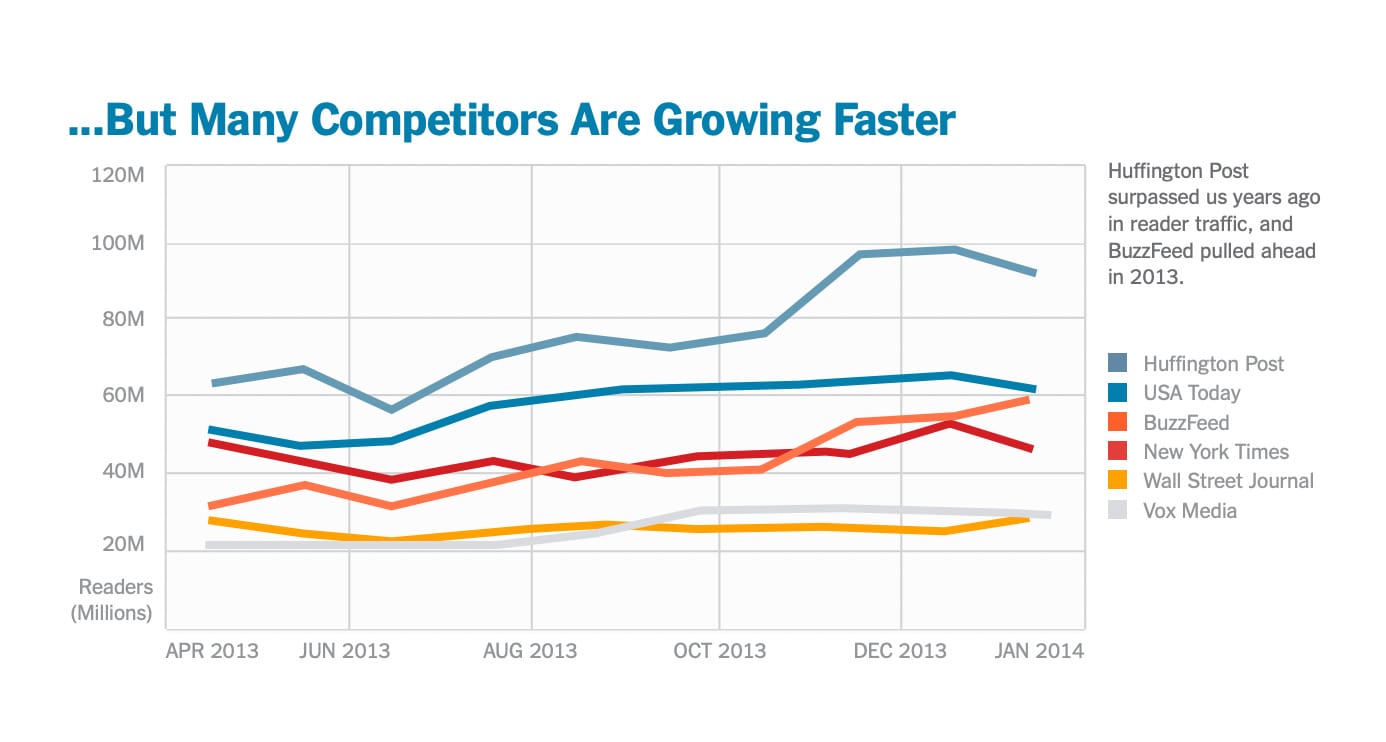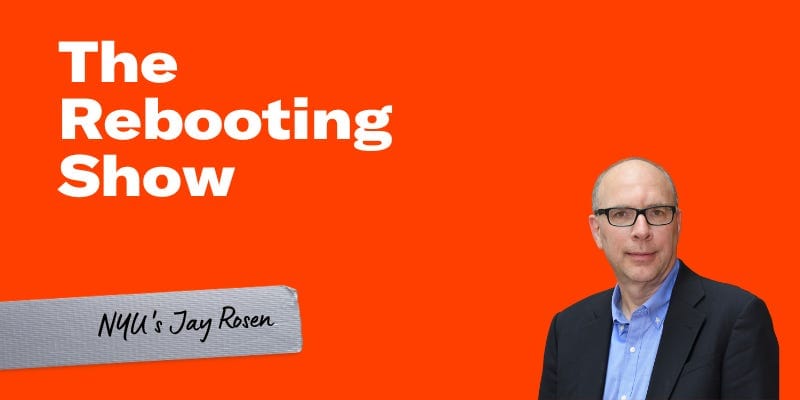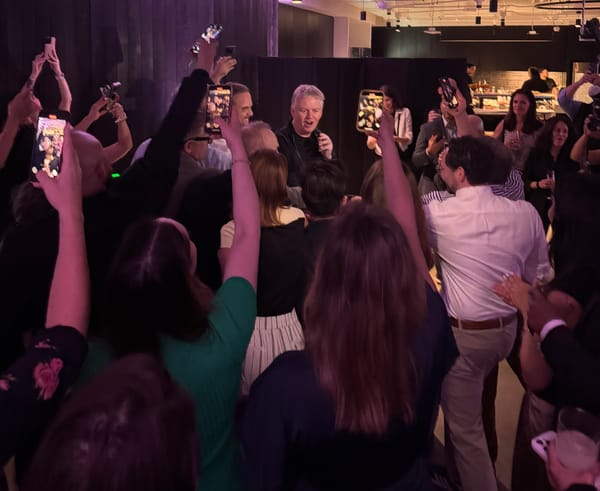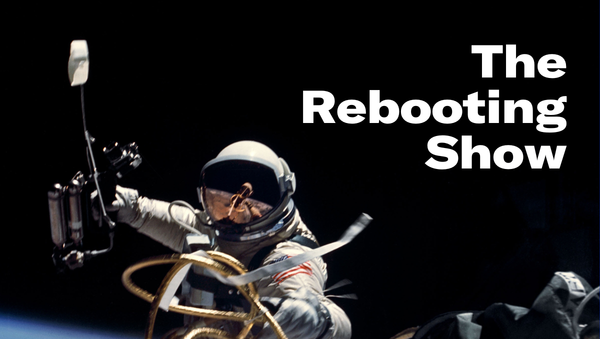The BuzzFeed News misalignment
Plus: a podcast with NYU's Jay Rosen on news subsidies

Hi,
I screwed up that Cannes form last week. If you’re heading to Cannes this year, The Rebooting is holding three days of conversations at the Kerv Cafe, situated right across from the Palais. Join “The New Attention Economy” from June 19-21. Hope to see you on the Croisette. Submit your information here. Thanks to Kerv for supporting this.
The BuzzFeed News misalignment

The closure of BuzzFeed News is the perfect hook for an “end-of-an-era” column. In the aftermath of the financial crisis, a new crop of digital media companies took flight, backed with venture capital infusions, betting they could reshape news, and attract those pesky millennials, for a changed media environment being defined by Facebook and other tech platforms.
The financial crisis had brought legacy news media to the brink. In those years, The New York Times, now seen as one of the few successful news operations, was in hock to a Mexican billionaire and regularly the subject of questions of its viability.
Companies like BuzzFeed were seen as the future. Its expansion into news in 2012 by hiring Ben Smith, known for his frenetic, high metabolism blogging at Politico, was seen as a watershed moment. The BuzzFeed newsroom was innovative, marrying the audience focus on classic BuzzFeed with the serious work of breaking news. By 2014, The New York Times’ hand-wringing Innovation Report namechecked BuzzFeed 23 times, and the report’s existence was first reported by BuzzFeed. This was a time when “BuzzFeed envy” was common among top publishing executives that, consciously or not, mimicked BuzzFeed’s approaches. Even the NYT began writing listicles.

The super smart Internet guys were coming for the news business like Vaulter’s Lawrence entering the chicken coop. Incumbents looked to hedging strategies. NBC Universal would pour $200 million in BuzzFeed in 2015 rather than invest in the digital operations of its own news divisions. Refinery29 was in war zones. Mashable, which drew backing from Time Warner, wanted to follow BuzzFeed’s footsteps, bringing in a veteran New York Times editor to move beyond its Grumpy Cat roots. Legacy media was scrambling. Univision and Disney created Fusion, which was pointing to a “post-tex future” for news. A&E turned to Vice in 2016 had expanded its model into news and was eying taking on cable with an ambitious 24-hour news operation, Viceland. Disney even tried to buy BuzzFeed in a $600 million deal in 2013.
Stratechery’s Ben Thompson summed up the mood in a 2015 piece that declared BuzzFeed “the most important news organization in the world.” In this analysis, BuzzFeed had cracked the code of how to align a news organization with the distribution contours of the web.
But as Ben Smith – this time there are two Bens, not two Smiths – points out, a big error of the model was “not aligning a strong business with our news operation from the start.” Jonah echoed this in his own mea culpa. The mood around the upstarts began to change in 2016, as it became clear that Facebook traffic wasn’t worth much and the pivot to video was more of the same, only with higher costs. This was an era defined by hacks. The loss of control over distribution had turned publishing into an exercise of finding a distribution seam and exploiting the hell out of it until it closed. Then repeat.
The core business of BuzzFeed was to marry this mastery of social distribution with a content agency that transferred that expertise to marketers. In this strategy, news was an appendage that provided the “heft” of a hard-charging news division that would lift the money-making parts of the company. This is fairly loose alignment. But it was easy to ignore that reality during a zero-interest rate environment when the name of the game was growth. After all, one of BuzzFeed’s main stickers is the jagged arrow pointing upward.
BuzzFeed’s gravitational pull was felt across the industry, even at the stodgiest of outfits, often pulling them in different directions. That led to many strange strategic decisions and an era of chaotic lurching from tactic to tactic that sapped confidence in management from those in the cubicles. One veteran put it this way to me:
“They acted as the weights used by deep-sea divers: they brought everyone down. Once there, we saw some interesting things and learned new skills. But we were all still swimming at the bottom. Once they started having success with social-bait content, their pull was irresistible to even the most storied of media brands. The pressure from the higher-ups on middle managers like me was always to "be more like them" (and early Business Insider). We were all prisoners of the platforms' traffic machine and, regardless of what we were saying to ourselves, we were optimizing for that. That set back subscription strategies, paywalls and other business models by at least five years in my rough estimation A sliding-door history of media would ask what monetization strategies would different publications have pursued if BuzzFeed hadn't existed?”
News is often subsidized by other related activities. BuzzFeed News was the same, only the subsidies came from venture capital and some from platforms like Facebook. On this week’s episode of The Rebooting Show, NYU journalism professor Jay Rosen told me the current challenge for the news business is finding new subsidies. Bloomberg is a case in point, having built a substantial global news operation that the Financial Times pegs at a $500 million business. It helps that the media arm is under 4% of the revenue of Bloomberg LP, a data business at its heart. The role of news is smaller – “a fairly big brand builder and halo for the Bloomberg brand,” as former Bloomberg Media exec Parry Ravindranathan put it. “No wonder Mike Bloomberg wondered why have a website at all? Sometimes you need to ask the obvious question.
Many of these forays into news were misaligned with the business realities these organizations would need to operate within. On its own, news is difficult as a business, unless you can pull of a subscription model – and BuzzFeed didn’t go that path. Advertisers frequently disallow their ads from appearing next to the hot button issues that are at the heart of journalism. That essential misalignment between the business model (ads) and editorial mission would doom many of these efforts. The argument for news as a halo never made much sense, since advertisers were coming to BuzzFeed for the quizzes, not the Steele dossier. It didn’t help that BuzzFeed for too long chose to only monetize through native ad placements until belatedly embracing standard ads that are bulwarks of any pageview monetization strategy.
When BuzzFeed first went into news, I remember asking BuzzFeed president Jon Steinberg a tactical question: Wouldn’t they need to do away with the cutesy OMG, LOL, WTF, FTW buttons? How does that context work for an investigation of Medicare fraud? But this was the social feed era, where people were being trained by Facebook’s “news feed” to see family photos, birthday updates, “7 Things Only Middle Children Understand”and updates on world affairs in one stew. It never really made sense. Brands need to widen the aperture, but that can only go so far. Feeding algorithms will go down as a perhaps unavoidable error but an error nonetheless.
The decision of these publishers to throw their lots in with Facebook primarily and other platforms was disastrous. That much is now perfectly clear, although it didn’t stop a parade of publishers to line up like lemmings. Facebook CEO Mark Zuckerberg was jealous of Twitter’s seeming integral role in the Tahrir Square protests in 2011 and wanted Facebook’s news feed to live up to its name. Then, he and the company found other priorities when it became clear that news was a total headache. For Facebook, pivoting away from news was a sensible business decision. For publishers, it was a brutal blow.
This again is a case of misalignment. The argument of the time for casting your lot with Facebook is you want to ride a tiger. Facebook was growing so fast that it was simply too tempting to get in on the action. The problem is Facebook never needed the news business like news businesses needed Facebook. That misalignment doomed this era to fail.
What now? Slate’s Hillary Frey notes that the “old tricks are not working.” Ben sees a smaller future with news looking to connect directly to audiences through unscalable means like newsletters and events. There is a pining again for the humble homepage. The Messenger will look to recreate an old era. The prospect of AI overturning the game board will create a new cycle that will seek to correct the mistakes of the past.

Email is not just a reliable distribution mechanism that enables publishers to have a direct connection with an audience. It is also emerging as a critical source of information to build audience-centric businesses. Matt Keiser, CEO of LiveIntent, explains how publishers can most effectively make email a strategic imperative.
MK: Publishers (including brands like retailers) don’t have enough addressable inventory. Consumers only sporadically log in to a brand's website, however, the emails they open (you have to login to email to read it) from brands amount to dozens of authentication events for the consumer every month for the brand.
That’s LiveIntent’s superpower for helping publishers create addressability. No publisher will ever achieve 100% registration, however, when people opt-in to email the overall coverage increases.
We are able to work with brands to help them resolve about 70% of their traffic, depending on a Brand’s registration levels.
Learn how you can join more than 2,000 premium publishers and 1,000 advertisers that use LiveIntent.
“We need new subsidy systems. We need to try ones that didn’t make sense decades ago. There’s no perfect subsidy system.”

For more on the end of one era and the start of another, check out the latest episode of The Rebooting Show, featuring New York University professor Jay Rosen. Jay and I discuss the end of BuzzFeed News, the prospects for The Messenger and Semafor, why Trump hacked conventional political news coverage, promising efforts at building sustainable local journalism models, the need to find new subsidies for news operations and Jay’s belief that Fox News is not a legitimate news organization. The entire episode was a lot of fun, and we got to all these topics and more. One note: We recorded the episode last Friday, before Fox dropped the news it was “parting ways” with Tucker Carlson. Please check out the episode – and leave a rating and review.
Recommendations
Micropayments are the idea that has never worked for news but eventually will in some form. Publishers will need to do whatever they can to subsidize news. Browbeating advertisers to “support” local news will only go so far. Most won’t want much to do with news content in the name of brand safety. Subscriptions only convert a small percentage of an audience. Enter micropayments.
Chat search isn’t as primed for an ad model as regular search. Slipping in a link to an advertiser site tied to the query was a seamless model that’s been the one form of digital advertising that’s been a home run. Microsoft is experimenting with ways to integrate ads into its AI version of Bing. The execution is closer to what Vibrant Media was doing with its IntelliTxt double green underlined placements. Everything comes back in style again at some point.
Jay Penske emerging from the pack of would-be digital media moguls is a fitting turn. PMC and he never got the attention of overcovered digital media of the 2010s, but PMC looks well positioned to emerge as a consolidator, particularly as prices keep falling.
Newsletters are a great minimally viable media product, but they have ceilings for growth as seen by the struggles of “hot” newsletter companies to continue their growth trajectory. The key is moving beyond newsletters and into other media types. Podcasts is a popular contiguous type, although difficult to get right as it’s often a hits business. The Free Press, which grew out of Bari Weiss’s Substack newsletter, has managed to pull off a hit podcast with its J.K. Rowling podcast hitting 5 million downloads.
If Twitter isn’t in a death spiral as a business, it is one of the great fakeouts of all time. Elon Musk clearly doesn’t love advertising, despite his playing the game of going to an ad conference to talk in front of a bunch of skeptical advertisers. Saying nice things on stage is one thing, but as Ari Paparo pointed out on the Marketecture podcast, just who is running advertising at the company? That’s an important detail. Perhaps that person would raise their hand in the meeting where it was decided to require payment for verification, berate wary advertisers as being anti-free speech and apply crowdsourced “fact checks” to ad claims. And that’s not even getting to the ham-handed approach to the idiotic blue check mark imbroglio that has noteworthy people and institutions making clear they didn’t pay for the designation. If just a few of these actions were taken by someone other than Musk, most people would be wondering when they’d get fired.
Thanks to LiveIntent for sponsoring this edition of The Rebooting. Check out how LiveIntent helps companies win with email.
Get in touch if you want to discuss sponsorship options to reach over 15,500 publishing professionals. My email is brian@therebooting.com.




